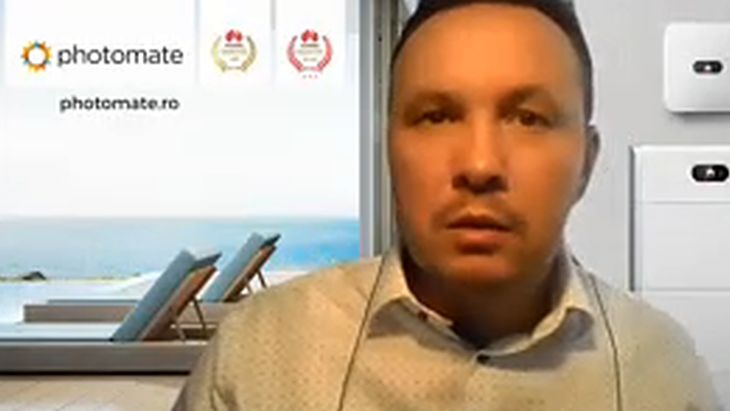When we talk about infrastructure, most of us think of roads and highways, and maybe the sewerage and drinking water network. Energy infrastructure is not very visible and, perhaps, that is why it is not so much among the concerns of the general public and decision-makers, alike, said Adrian Paraschiv, Country Manager Photomate, during the conference “Digitalization and Energy Efficiency – Sibiu”, organized by Energynomics. “The truth is that both the distribution network and the electricity transmission network need major investments to meet the growing demand today and in the future,” said Adrian Paraschiv.
Simultaneously with the efforts to modernize and strengthen the power grids, each of us, at home and at work, do everything we can to ensure constant access to electricity, at reasonable prices. “Photovoltaic systems are one of the solutions that can quickly provide us with the electricity we need,” said the representative of Photomate, a partner company for Huawei FusionSolar and xelectric.
Adrian Paraschiv referred to the benefits of using photovoltaic systems from an operational perspective (power resilience, grid stabilization, increased flexibility), financial (minimize distribution costs, power on demand, reduction of electricity bills) and environmental (reduced fuel burn and emissions, stored renewable energy, off-grid power solutions).
Poland, Ukraine and Slovakia are currently the main markets for Huawei FusionSolar, with almost 1.3 GW delivered in 2020. Adrian Paraschiv also presented a project made in Romania, a 48 kWp system installed on an office building in Bucharest.
“A house usually consumes around 5kWh per day. With Huawei’s Luna2000 systems, with a storage capacity between 5kWh and 30 kWh, we can store the energy produced when we don’t need it, to use it when we want, for our own consumption, or for network injection”, he explained. For larger capacity storage, Huawei announced in 2021 the 2 MWh Luna2000 systems, which will be available from 2021. “These are utility-scale, very high power equipment, which can be monitored and programmed in real-time through the dedicated application,” he said.
DOWNLOAD THE PRESENTATION OF ADRIAN PARASCHIV
In terms of energy storage for the commercial segment, for small businesses, or for electric cars charging stations, xelectric’s solutions are more suitable, considers Adrian Paraschiv. “Electric systems are safe and they can be hybridized with electric generators, which are quite expensive. On average, a diesel generator runs about 8,000 hours, with a technical overhaul every 2,000 hours of operation. By hybridization, we reduce operating costs, mainly with fuel, and we no longer need the ramp-up interval, the 15-20 seconds until the generator reaches the rated speed. When the grid fails, the electrical systems immediately take over the load, and then they are charged using the energy produced by the generator.”
The conference “Digitalization and Energy Efficiency – Sibiu” was organized by Energynomics, with the support of our partners ABB România, Enel X România, Kawasaki Gas Turbine Europe GmbH, Photomate, Sixt, Wiren.
